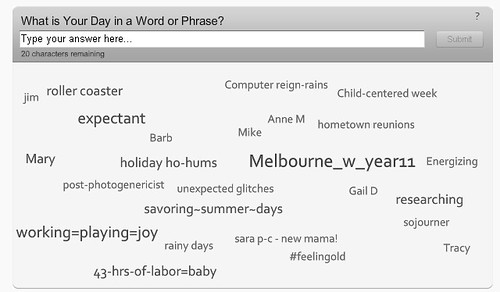Our state of Massachusetts has joined a growing list of other states (28, I think) in adopting the Common Core of Standards as our own curriculum framework for the future. (see news release from our Education Department).
This is sure to be a controversial decision for some time, as so much of the work we do in our classrooms and professional development revolves around our state curriculum frameworks (which form the basis for our MCAS standardized test). While I have some issues with our past state frameworks, for the most part, I found them to be pretty thoughtful (with the exception that technology was never really embedded in there) and placed a lot of emphasis on creative content.The Common Core is much more focused on expository reading and writing, with informational text at the heart of much of the standards.
In fact, some backlash on the decision to move into the Common Core is already starting, as some believe that the Common Core is a step backwards for Massachusetts, given its past work around curriculum frameworks, and they worry about what a national assessment of the Common Core might look like in the future.
“We are now tethered to the rest of the country. Where we could have shown the political courage of implementing state reforms that gave us the best schools in the world, well, now we have to drag along the rest of the country before we can do it.” – from the blog post by Jim Stergios, of the Pioneer Institute.
The full Common Core document for ELA is here.
The Common Core will become our new state guideposts for English Language Arts and Mathematics, although when and how that transition will take shape is unknown. At a recent New Literacies Initiative week that I was part of, our state education commissioner sort of hemmed and hawed about whether Massachusetts would actually adopt the Common Core this summer, but I knew it would surely happen because we are in line for federal dollars in our bid for Race to the Top and the Common Core is a huge carrot dangling in front of us.
While I am not sure that moving towards a national curriculum framework is the right path, I do like that the Common Core emphasizes the teaching of writing and reading across the content areas. I know my students come to me with a real weakness in understanding informational text. This shift puts literacy right into the heart of most learning, although at what expense to creative writing and reading, I can’t yet say. (Sidenote: Next week, my wife is joining a group of National Writing Project folks on a year-long project to begin work on designing lesson plans and curriculum guides that will allow teachers to meet the requirements of the Common Core while still retaining writing at the heart of activities and teacher flexibility. More on that in the future …)
One thing that occurs to me is that our school district’s Standards-based progress report (formerly know as our report card) is built off our of (now) old Massachusetts curriculum frameworks, which means that we need to revisit that system again in light of the adoption of the Common Core standards. Looking over the Common Core document, there is a lot of alignment between the two sets of standards, but I foresee some more progress report work in the near future.
Right now, I am pulling out all of the sixth grade reading and writing standards from the Common Core report as a way to get a sense of what is there and I am hoping this will help me shape my overall opinions of it as a curriculum guide. I know there are plenty of folks who don’t like the Common Core standards, but I want to see it in all of its details myself before making a judgment.
Peace (in the changes),
Kevin


